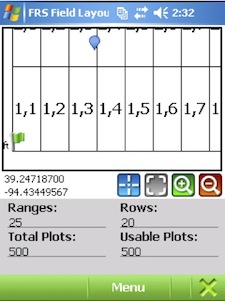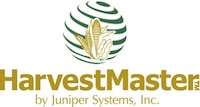 Registration begins June 18 for the 10th International Precision Agriculture Conference, held July 18-21 at the Hyatt Regency Tech Center in Denver, Colorado.
Registration begins June 18 for the 10th International Precision Agriculture Conference, held July 18-21 at the Hyatt Regency Tech Center in Denver, Colorado.
Precision agriculture is growing and so is the precision agricultural community across the world. The 10th International Conference on Precision Agriculture is envisaged to be the largest ever; with more than 500 attendees from all over the U.S and over 40 countries (see program details, coming soon on www.icpaonline.org).
As with previous ICPA conferences, the 10 International Conference on Precision Agriculture will provide a forum for presentations on the current state of precision agriculture research and applications. The conference will facilitate interaction among research scientists, producers, technology company representatives, equipment manufacturers, input dealers, agronomic consultants, software developers, educators, government personnel and policymakers.
Presentation main topics include:
• Sensor Application in Managing In-season Crop Variability
• Spatial Variability in Crop, Soil and Natural Resources
• Precision Nutrient Management
• Precision Conservation
• Precision Horticulture
• Remote Sensing Applications in Precision Agriculture
• Engineering Technologies and Advances
• Profitability, Sustainability and Adoption
• Emerging Issues in Precision Agriculture (Energy, Biofuels, Climate Change)
• Information Management and Traceability
• Education and Training in Precision Agriculture
• Guidance, Auto Steer, and GPS Systems
• Modeling and Geo-statistics
• Global Proliferation of Precision Agriculture and its Applications



 When discussion centers around all the data that fields can generate these days, crop consultants and savvy growers truly love powerful software programs. Especially when data can transfer easily between desktop and a mobile device to take to the field.
When discussion centers around all the data that fields can generate these days, crop consultants and savvy growers truly love powerful software programs. Especially when data can transfer easily between desktop and a mobile device to take to the field.


 Two more recipients of the
Two more recipients of the  OptiGro provides agricultural advice, information, and precision agriculture resources to farmer-customers designed to provide maximum return on investment. OptiGro includes trained Certified Crop Advisors utilizing the latest software applications paired with Web transmission and integration for agricultural data processing, storage, and analysis. OptiGro improves the productivity and profitability of each customer through a higher level of management and expertise.
OptiGro provides agricultural advice, information, and precision agriculture resources to farmer-customers designed to provide maximum return on investment. OptiGro includes trained Certified Crop Advisors utilizing the latest software applications paired with Web transmission and integration for agricultural data processing, storage, and analysis. OptiGro improves the productivity and profitability of each customer through a higher level of management and expertise. Griffin has conducted economic analyses such as tracking technology adoption and evaluating farm-level profitability of yield monitors, variable rate applications, and GPS-enabled navigation technologies; but he has also worked with scientists not traditionally associated with precision agriculture such as gerontologists to study how GPS guidance impacts the quality-of-life of older farmers or those who suffer from disabilities.
Griffin has conducted economic analyses such as tracking technology adoption and evaluating farm-level profitability of yield monitors, variable rate applications, and GPS-enabled navigation technologies; but he has also worked with scientists not traditionally associated with precision agriculture such as gerontologists to study how GPS guidance impacts the quality-of-life of older farmers or those who suffer from disabilities.



 FRS Field Layout on a GPS enabled Windows Mobile® device is designed to assist researchers in establishing field boundaries. Field Layout replaces traditional methods that depend on laborious processes using tape measures, right angle prisms, range finders, and an extra person. Field Layout utilizes GPS signals to define and mark the four corners of the field and lets the user measure distance between any two points to verify location and accuracy. Once a field map has been generated, FRS Field Layout creates individual plots within the defined field boundary. When returning to plant the field, FRS displays field boundaries quickly and allows efficient navigation to those positions.
FRS Field Layout on a GPS enabled Windows Mobile® device is designed to assist researchers in establishing field boundaries. Field Layout replaces traditional methods that depend on laborious processes using tape measures, right angle prisms, range finders, and an extra person. Field Layout utilizes GPS signals to define and mark the four corners of the field and lets the user measure distance between any two points to verify location and accuracy. Once a field map has been generated, FRS Field Layout creates individual plots within the defined field boundary. When returning to plant the field, FRS displays field boundaries quickly and allows efficient navigation to those positions.